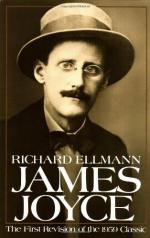|
This section contains 5,663 words (approx. 19 pages at 300 words per page) |

|
SOURCE: Norris, Margot. “Masculinity Games in ‘After the Race.’” In Masculinities in Joyce: Postcolonial Constructions, edited by Christine van Boheemen-Saaf and Colleen Lamos, pp. 13-31. Atlanta: Rodopi, 2001.
In the following essay, Norris examines the paradox of gender identity and demeanor in Joyce's story, “After the Race.”
James Joyce's story “After the Race” exhibits a curious paradox. As the Dubliners story representing the most powerful figures—economically and socially—the story itself has emerged as perhaps the weakest in the collection and the one most vulnerable to critical disparagement. Emboldened by Joyce's own judgment—“The two worst stories are ‘After the Race’ and ‘A Painful Case’” (“Letter to Stanislaus Joyce, 6 November 1906,1—Warren Beck virtually dismisses the story for being “labored” and “awkward” in narrative technique; and, in comparison to the other stories in the collection, he finds them “less penetrating,” “sketchier,” and “the least realized.”2 Whether or not one...
|
This section contains 5,663 words (approx. 19 pages at 300 words per page) |

|


